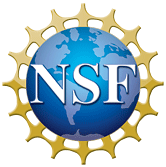Summary
| Also known as
|
|
| Model type
|
Tool
|
| Model part of larger framework
|
|
| Note on status model
|
|
| Date note status model
|
|
Technical specs
| Supported platforms
|
Unix, Linux, Mac OS, Windows
|
| Other platform
|
|
| Programming language
|
Matlab
|
| Other program language
|
|
| Code optimized
|
Single Processor
|
| Multiple processors implemented
|
|
| Nr of distributed processors
|
|
| Nr of shared processors
|
|
| Start year development
|
2009
|
| Does model development still take place?
|
Yes
|
| If above answer is no, provide end year model development
|
2010
|
| Code development status
|
|
| When did you indicate the 'code development status'?
|
|
| Model availability
|
As code
|
Source code availability
(Or provide future intension)
|
Through owner"Through owner" is not in the list (Through web repository, Through CSDMS repository) of allowed values for the "Source code availability" property., Through CSDMS repository
|
| Source web address
|
|
| Source csdms web address
|
|
| Program license type
|
GPL v2
|
| Program license type other
|
|
| Memory requirements
|
|
| Typical run time
|
seconds
|
In/Output
| Describe input parameters
|
daily water discharge series;
daily sediment flux series;
averaged channel cross-sectional depth, averaged channel cross-sectional width;
floodplain width;
manning coefficients of the channel and floodplain;
longitudinal channel slope;
Channel bed's super-elevation above the floodplain where sedimentation rate is close to 0;
M-coefficient for erosion rate for the bottom of crevasse splay;
M-coefficient for erosion rate for the two side slopes of crevasse splay;
critical velocity for erosion;
critical velocity for deposition;
width of dike at the root;
cross valley slope;
settling velocity of suspended load in the channel.
|
| Input format
|
ASCII
|
| Other input format
|
|
| Describe output parameters
|
averaged daily water discharge to lower reach of crevasse splay;
averaged daily crevasse splay depth;
averaged daily crevasse splay width
|
| Output format
|
ASCII
|
| Other output format
|
|
| Pre-processing software needed?
|
No
|
| Describe pre-processing software
|
|
| Post-processing software needed?
|
No
|
| Describe post-processing software
|
|
| Visualization software needed?
|
No
|
| If above answer is yes
|
|
| Other visualization software
|
|
Process
| Describe processes represented by the model
|
As a crevasse splay evolves, the slope of its outflow should be no less than the slope of lower channel; and the bottom elevation of a crevasse splay should be no lower than the elevation of lowest point of channel bed, so the bottom elevation of the lowest point that a crevasse splay is able to cut down is max(hs, Zcsb).
A ratio of Q above the bottom of crevasse splay can be distributed to outflow of crevasse splay. After flow parameters for the outflow of crevasse splay are calculated, the erosion (deposition) rate of crevasse splay can be calculated, thus the morphology of crevasse splay can be updated.
When the crevasse splay has not yet cut down to the lowest point max(hs,Zcsb), it can be both widened and deepened. When the crevasse splay has cut down to the lowest point max(hs,Zcsb), it can only be widened or silted vertically.
|
| Describe key physical parameters and equations
|
Key physical parameters:
Q: water discharge upstream crevasse splay;
Qcs: outflow discharge of crevasse splay;
Qabove: the water discharge above the bottom of crevasse splay;
rq: the discharge ratio of Qcs and Qabove;
hs: channel belt's super-elevation (the elevation of lowest point of channel bed);
Zcs: bottom elevation of crevasse splay;
Bcs: width of crevasse splay;
Hcs: flow depth of crevasse splay;
Vcs: flow velocity of crevasse splay;
jcs: slope of the outflow of crevasse splay;
Zcsb: bottom elevation of a crevasse splay whose flow slope is equal to the channel slope j;
Key physical equations:
Zcs<=max(hs,Zcsb);
rq=(1.55-1.45*Fi)*Bcs/wc+0.16*(1-2*Fi), in which Fi is the Fraud number for flow in the trunk channel, wc is width of the trunk channel;
Hcs=(nc*Qcs/sqrt(jcs)/Bcs)^(3/5);
Vcs=Qcs/Hcs/Bcs;
dE=M*(Vcs^2-ucre^2)/ucre^2*dt, where M is M-coefficient for erosion rate for crevasse slpay, ucre is critical velocity for erosion, dt is time step;
dD=Sv*(1-Vcs^2/ucrd^2)*ws/0.6*dt, where Sv is volume sediment concentration, ucrd is critical velocity for deposition, ws is settling velocity of suspended load, dt is time step.
|
| Describe length scale and resolution constraints
|
length scale: meters
resolution constraint: centimeter
|
| Describe time scale and resolution constraints
|
time scale: decades
resolution constraints: day
|
| Describe any numerical limitations and issues
|
|
Testing
| Describe available calibration data sets
|
|
| Upload calibration data sets if available:
|
|
| Describe available test data sets
|
Q(m^3/s): daily water discharge series, 365 by 1 matrix
Qs(kg/s): daily sediment flux series, 365 by 1 matrix
The trigger flood event is set at the 232th day
|
| Upload test data sets if available:
|
Media:Testdata.rar
|
| Describe ideal data for testing
|
[[Describe ideal data::As a test, you can use the attached test data Q and Qs, and run
[Qd,Delta_hcs,Bcs,Delta_hcsd,Bcsd,Qout,Qcs,Zcs,Hcs,Vcs]=mainCS(Q,Qs,365,232,1,2,965,2.3,4795,0.009,0.03,1.377e-4,-2,0.0005,0.004,1.5,0.7,1800,2.5e-4,25,4.5e-4)]]
|
Other
| Do you have current or future plans for collaborating with other researchers?
|
I'm now writing some papers coauthored with James Syvitski, Irina Overeem and Albert Kettner, on historical channel avulsions and source-to-sink sediment budget models of the Yellow River basin.
|
| Is there a manual available?
|
No
|
| Upload manual if available:
|
|
| Model website if any
|
|
| Model forum / discussion board
|
|
Introduction
History
Papers
Issues
Help
Input Files
Output Files
Download
Source |
